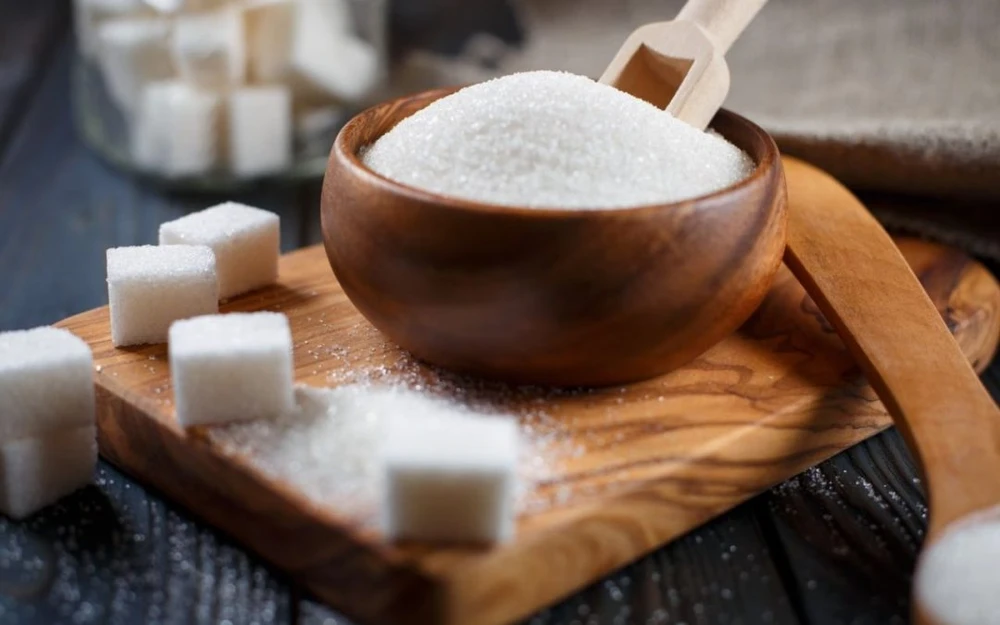
However, the reality paints a different picture as sugar stocks continue to struggle to achieve the projected increase, with several businesses facing counterproductive consequences.
Addressing Price Concerns
The decision by the Indian Government to halt sugar exports stems from a twofold purpose—ensuring domestic demand and addressing apprehensions about weakened output due to the El Niño phenomenon causing drought. Before the export ban was announced, global sugar prices had soared to a 10-year zenith in April. This surge was primarily driven by India's sugar output plummeting by 5% over the same period, resulting in a significant 46% decline in export revenue. Notably, raw sugar prices reached a staggering 56% surge compared to the same period in 2022 and a 35% increase from the start of 2023.
Further adding to the situation, the US Department of Agriculture (USDA) predicted a 13% drop in worldwide sugar reserve output for the 2022-2023 crop year. This forecast created pressure to maintain sugar prices at elevated levels. The USDA's projections are rooted in Brazil's decision to enhance ethanol production from sugarcane, especially as rising oil prices followed OPEC's production reduction. Additionally, the Russia-Ukraine conflict has disrupted beet exports from these countries, leading to a predicted decline in sugar output from beets.
On the domestic front, sugar prices started surging in line with global trends, compounded by the implementation of anti-subsidy and anti-dumping policies to shield domestic businesses from imported sugar from Thailand, the fourth-largest global sugar exporter. In May, domestic sugar prices peaked at VND 20,000 per kilogram—an increase of 12% over the same period and 10% from the start of the year. The tightening supply from India is expected to positively influence global sugar prices, not just in the current crop year but continuing into the subsequent years.
Foreign Sugar Pressure
Vietnam's sugar industry grapples with stiff competition from imported sugar, particularly following tariff reductions under the ATIGA agreement effective from January 1, 2020. The year 2020 witnessed a 34% surge in total sugar imports into Vietnam while domestic sugar production dwindled by 24%. This trend can be attributed to the relatively weaker competitive edge of Vietnam's sugar industry compared to major sugarcane-producing countries worldwide.
For instance, production, processing, and management costs for Vietnamese sugarcane are respectively 30%, 183%, and 53% higher than those of Thailand. Consequently, imported sugar prices tend to be around VND 200-300 per kilogram lower than domestic sugar.
This scenario underscores that a surge in global sugar prices could adversely affect Vietnam's sugar industry, especially considering that imported sugar accounts for two-thirds of the consumption. In the ASEAN region, Thailand's robust sugar production could escalate the influx of smuggled sugar into Vietnam, particularly in the 2023-2024 period.
Vietnam's Ministry of Industry and Trade introduced sugar import quotas to counteract competitive pressure from Thai sugar, a move that became imperative as the country's sugar industry saw imports increase by 34% in 2020 while domestic production dwindled by 24%. Consequently, to address tax evasion, the ministry implemented measures (Decision 1514/QD-BCT) for Thai-origin raw sugar products, imposing a total tax rate of 47.64%. This move has led to a reduction in official sugar imports into Vietnam, which decreased from 1.7 million tons in 2021 to 1.2 million tons in 2022.
Notably, the Vietnam Sugar Association (VSSA) has reported improved control over smuggled sugar since the second quarter of 2023, attributed to heightened inspection activities.
Mixed Business Impact
While measures aimed at safeguarding the domestic sugar industry are taken, they may not necessarily yield positive outcomes for all businesses. This holds especially true for commercial enterprises such as Lam Son Sugar Joint Stock Company (LSS). The LSS, for instance, faced an adverse impact on revenue growth in the 2022-2023 crop year due to reduced imported sugar quantities.
In the first three quarters of the fiscal year 2022-2023, LSS reported net revenue and net profit of VND 1,000 billion—down by 15% year-on-year and VND 16 billion—down by 22% year-on-year, respectively. For sugar production, LSS yields approximately 55,000 tons per year, constituting just 52% of the consumption volume—a relatively modest share compared to other players in the industry.
Similarly, Cao Bang Sugar Joint Stock Company (CBS) and Kon Tum Sugar Joint Stock Company (KTS) face comparable challenges owing to their smaller scale and sugarcane acreage. Conversely, larger-scale enterprises with ample sugarcane acreage, like Thanh Thanh Cong - Bien Hoa Joint Stock Company (SBT), Quang Ngai Sugar Joint Stock Company (QNS), and Son La Sugar Joint Stock Company (SLS), stand to benefit.
Nonetheless, businesses across the spectrum share a common concern—the apprehension of a drop in demand. This is fueled by the Ministry of Finance's consultation on excise tax for sugary drinks. The proposed Law on Special Consumption Tax (amended) is slated to be presented to the National Assembly in May 2024. Under the draft, the Ministry of Finance suggests imposing an excise tax on "sugar beverage products, according to Vietnamese standards."
This isn't the first instance of the Ministry of Finance presenting such a bill. In 2014, a 10% special consumption tax on sugary drinks was proposed but not approved. According to the World Health Organization (WHO), such taxes could lead to a drop in sugary beverage consumption in Vietnam by 860-900 million liters.




















